This N.B. family built a wilderness getaway out of a reclaimed grain silo
“I shared the idea with my wife, but she grew up on a farm where silos were mainly used for storing grain. So she thought I was crazy.”
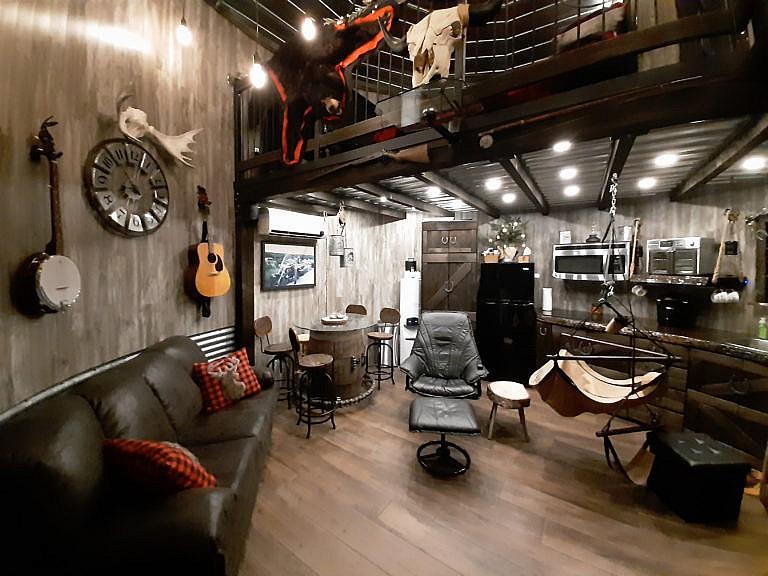
A former grain silo transformed into a camping getaway deep in the New Brunswick wilderness (Photos courtesy Steven Lord)
Share
As a young boy in the mid-’70s, Steven Lord heard stories about his grandfather’s cottage. His father, Guy, would muse about the small wooden shack perched on New Brunswick’s Green River, 15 kilometres deep into the Atlantic Canadian wilderness and flanking the boundary of Quebec. By 2020, the cottage had long been torn down, and Lord, then a 50-year-old maintenance millwright, dreamed of rebuilding on the deserted family lot for weekend getaways with his wife, Paryse.
While perusing Facebook one night in his family home in Rivière-Verte, in northwest New Brunswick, Lord came across a post from someone in the United States who had built a cottage from a farm-grade metal grain silo. Lord wondered if he could create something similar. “I shared the idea with my wife, but she grew up on a farm where silos were mainly used for storing grain,” he said. “So she thought I was crazy.”
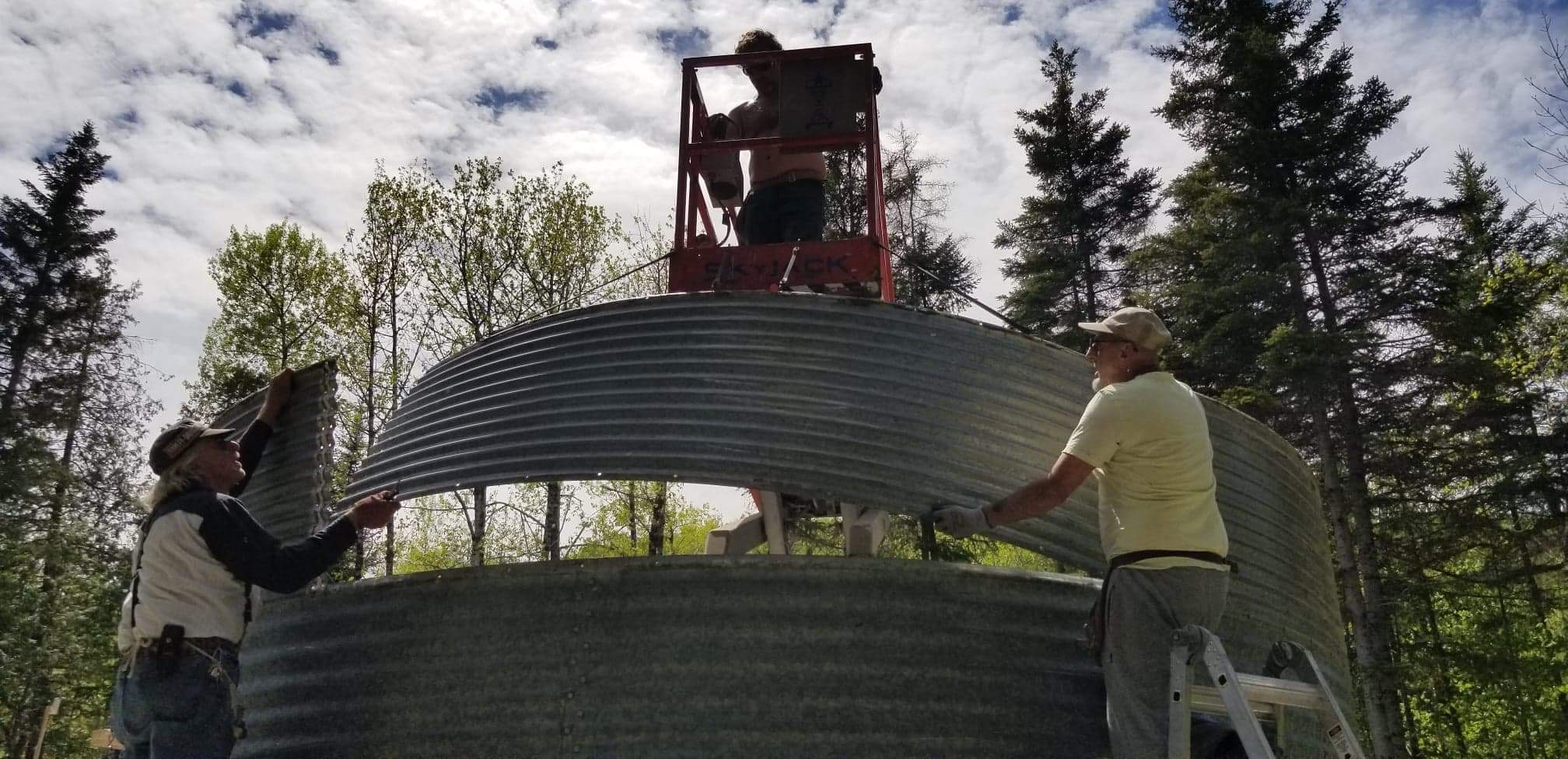
The idea stuck with Lord: he thought that a rounded steel cottage would make for an imaginative replacement for the campsite he and his wife frequented on weekends in their Wildcat RV. He browsed local buy-and-sell websites like Facebook Marketplace and Kijiji for second-hand silos, and eventually found one in the nearby 200-person town of Siegas. The farmer selling it told Lord, “If you promise me that you will find a way to live in this old piece of metal, you can have it for free.”
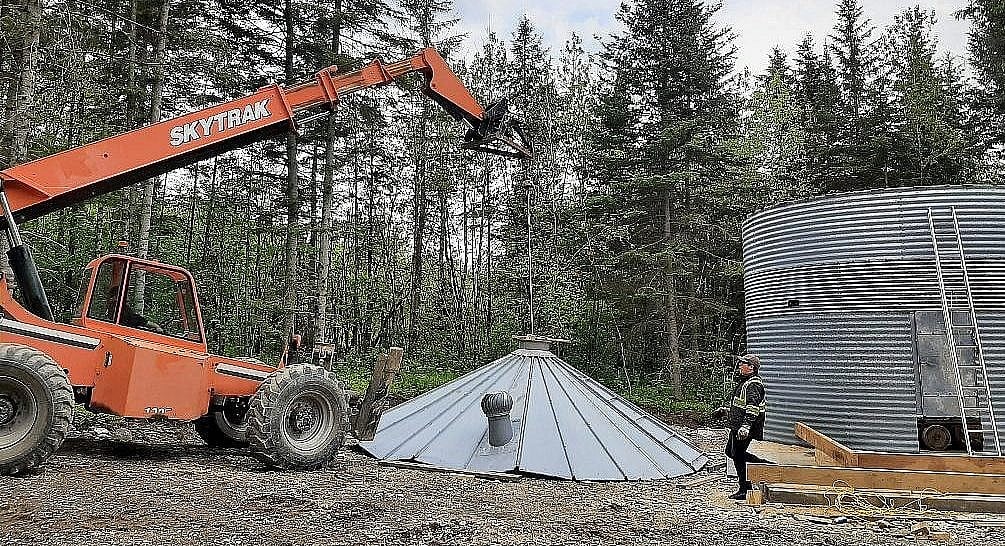

From there, Lord took the silo apart, packed its 50 pieces and 100 bolts into a trailer, drove it north to the 50-acre family lot, and got to work. “I had no blueprint and was totally in the dark,” he said.
He began by hiring someone to lay a 20-by-32-foot slab of cement. From there, he sealed the silo’s rim to the ground with cement to keep the water out, and grounded the tin structure to protect it from lightning strikes. He winterproofed it by installing a heat pump and $6,000 worth of urethane insulation, dug a well, and used underground wiring to connect the shack to the provincial power grid.
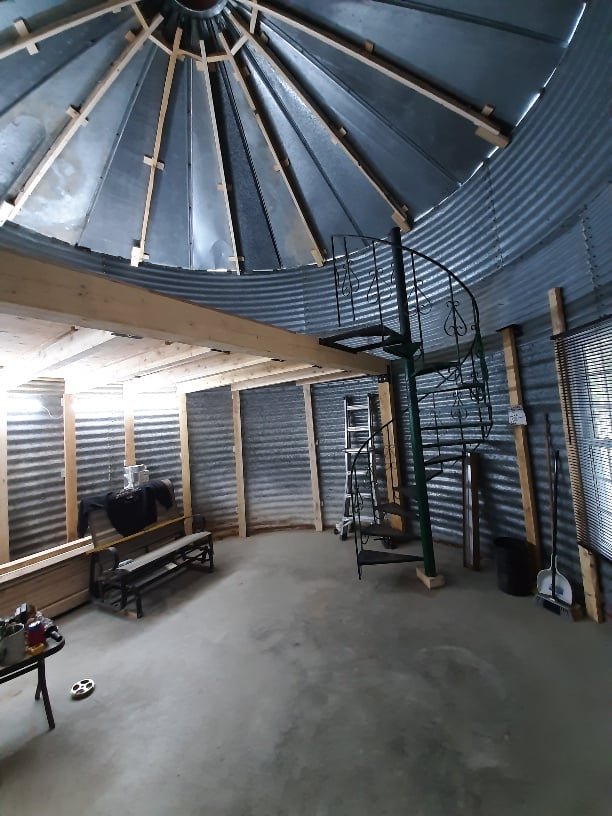
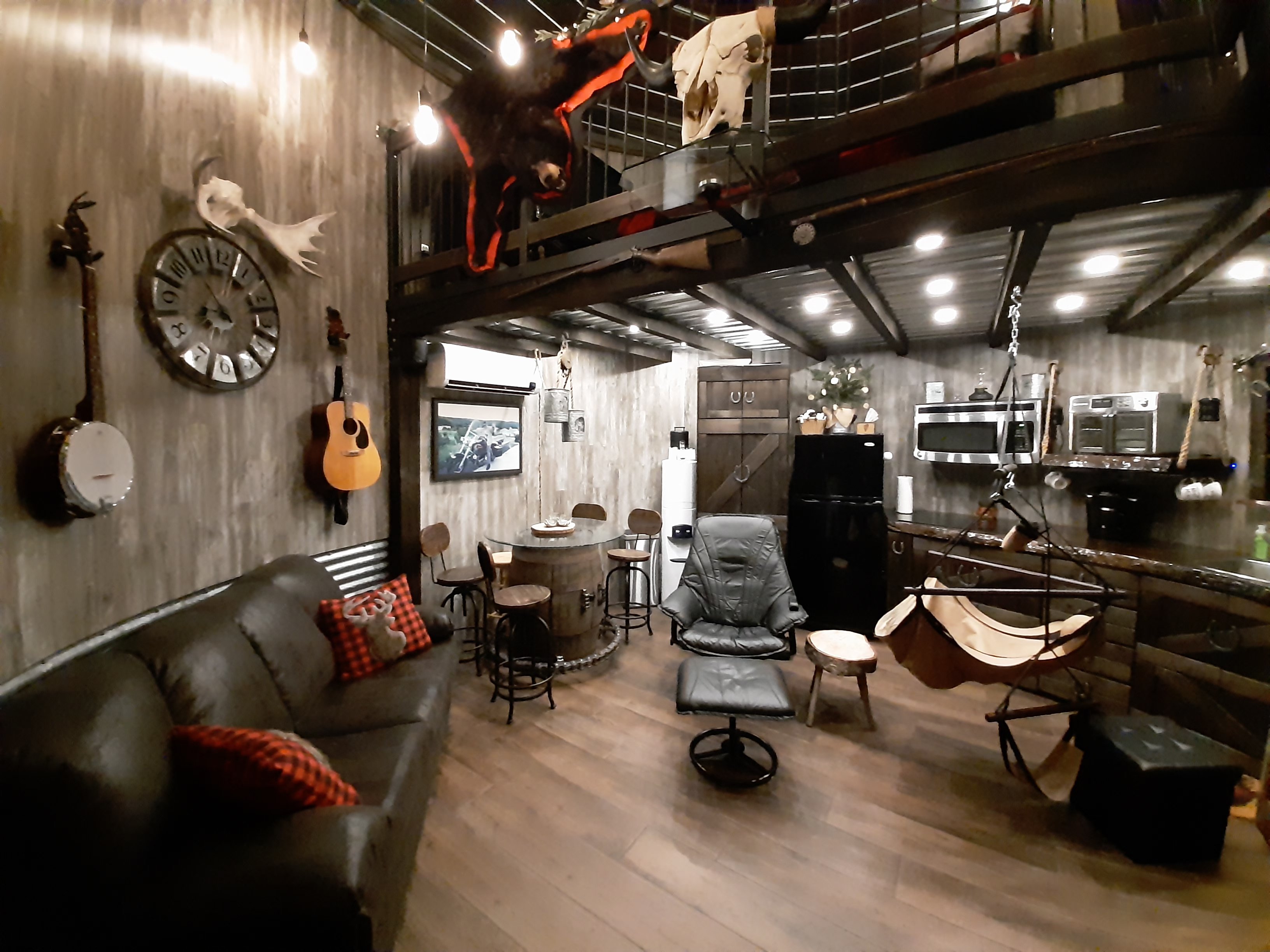
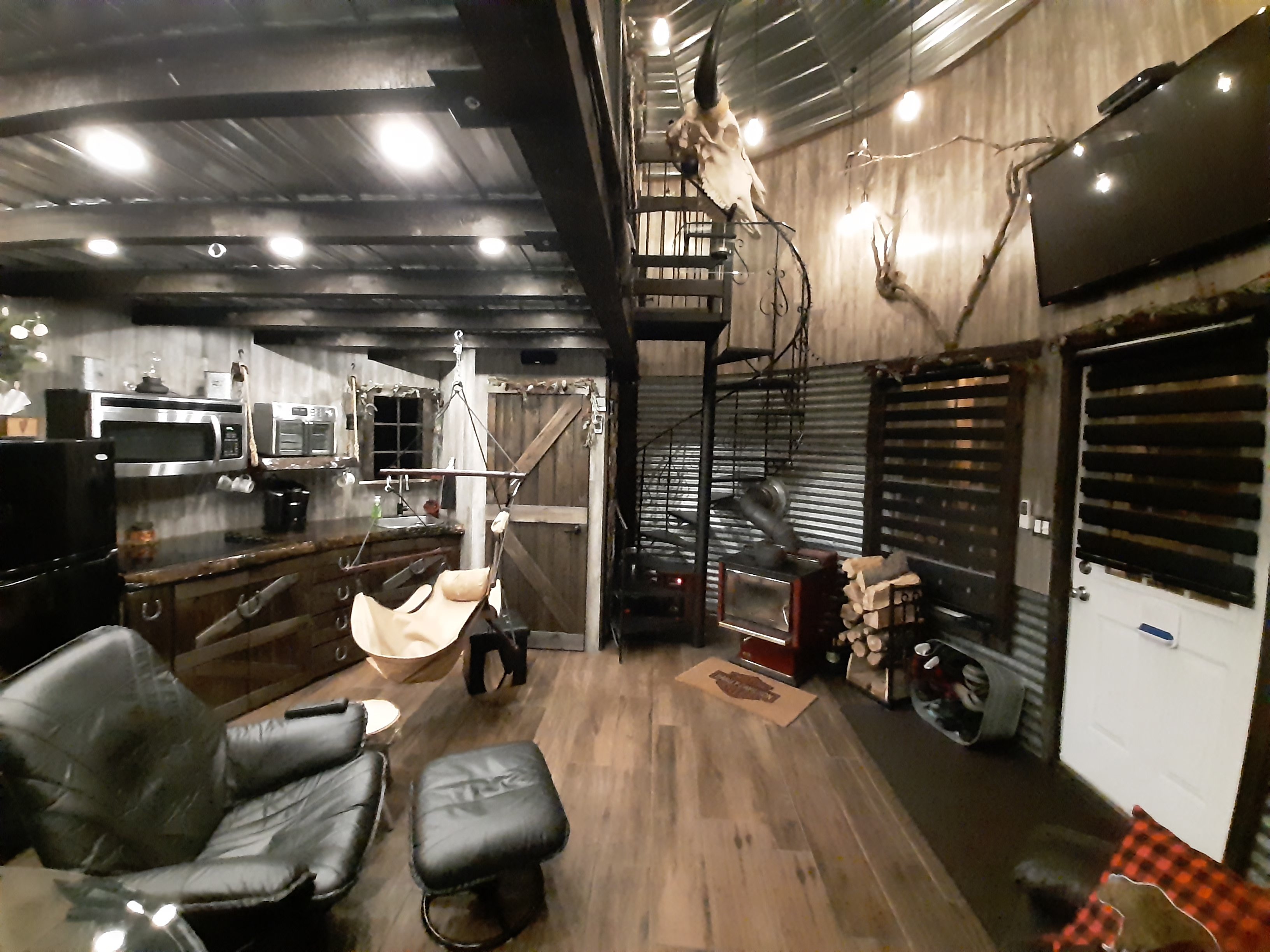
Then came the indoor finishes in the main-floor living area and upstairs bedroom, which Lord called the most challenging step because of the silo’s rounded shape. To use as much of the space as possible, he lined the silo’s circular walls with cupboards and used curved flooring tiles as wall panelling. Then he procured wood from a local mill and crafted it into rounded cupboards.
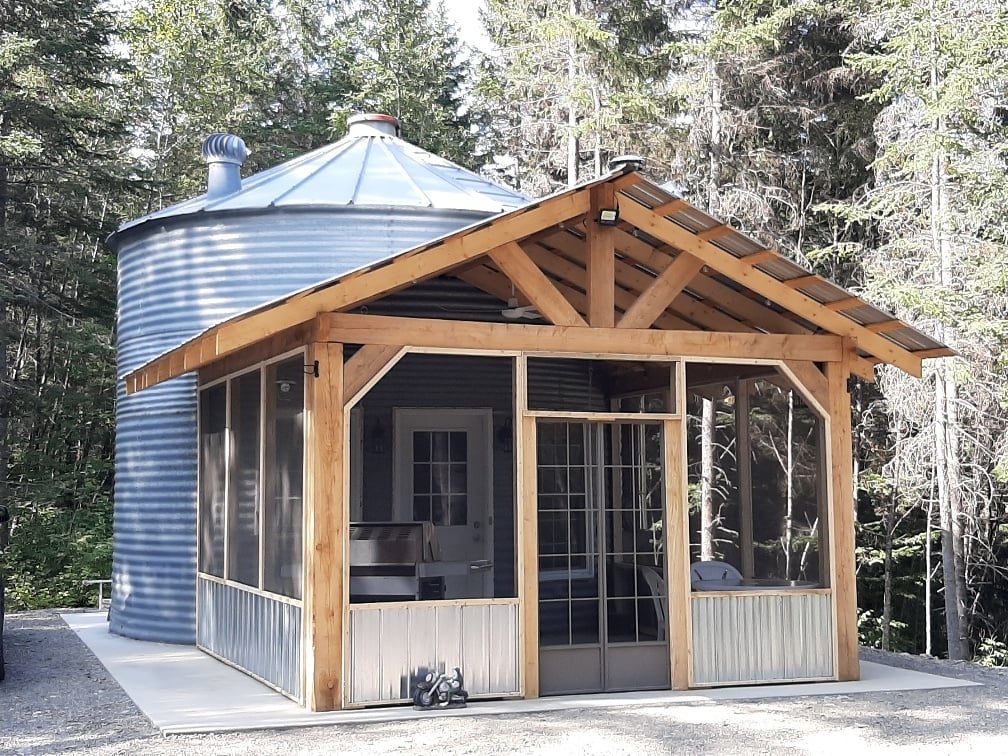
Instead of hiring construction workers, Lord kept the project in the family. He recruited his son Raphael and good friend Red as right-hand men. His 76-year-old mother painted the ladders to the upstairs bedroom, and his 84-year-old father, a retired mill worker, built the front gazebo. “My father had wanted to build something on this lot ever since we tore down my grandfather’s cottage,” said Lord, “so it was important to me that he contributed.”
Despite his wife’s skepticism over the new DIY project, Lord was convinced he would win her over once his masterpiece made the jump from functional to stylish. He sealed the dome with a glass window to let in sunlight, then installed a satellite dish and propped a TV three quarters of the way up the south wall to create a home theatre. He tied a second TV to the north wall and connected it to an outside camera that faces the river to mimic a kitchen window. Then he punctuated the place with rustic accents: moose antlers on the wall, clocks made from motorcycle wheels and a full bear skin dangling from the top floor’s railing.
Lord finished renovating the silo in October of 2021, with building costs reaching $50,000. “The goal, apart from impressing my wife, was to create something relatively cheap and low-maintenance,” he said, adding that he kept expenses down by purchasing the doors, windowsills and ladders second-hand.
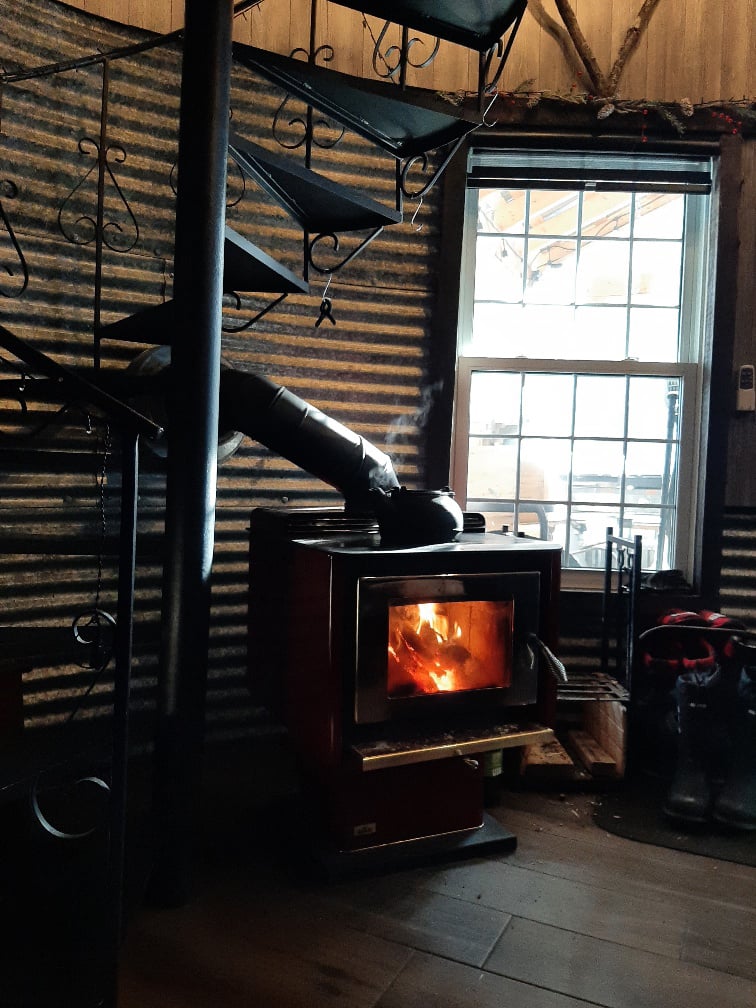
He accomplished at least one of his goals: after spending a few weekends in their new cabin, Lord and his wife liked their new abode so much that they sold the camper and campsite in Rivière Verte. They’ve frequented the silo on most weekends since that fall: snowshoeing in the winter, canoeing in the nearby river in the summer, and sitting around bonfires year-round. The lot, 10 kilometres down a rolling dirt road that forks away from northern New Brunswick’s main highway, has no neighbours within earshot.
“We hear absolutely nothing and are completely immersed in nature like no place I’ve ever seen,” he said. “My parents enjoy the place just as much as we do, and I’m really proud of that.”

Acquaintances and occasional passers-by have asked Lord if he would build another silo home and rent it out. For now, he said, a second metal home isn’t in the works.
“It’s funny that people are interested, but it’s not really something I want to profit from and scale,” he said. “This feels much more like a family passion project than a business opportunity.”